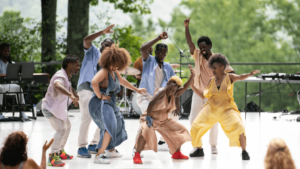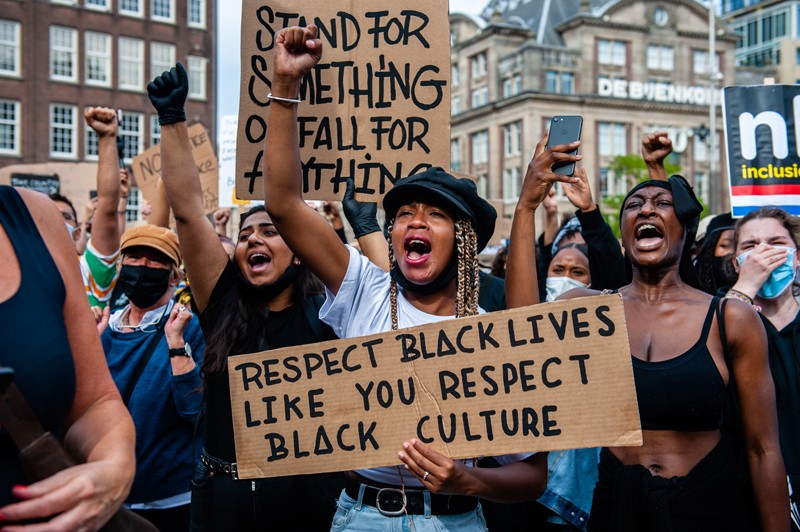ok, I have a bit more time to write.
==First off. This work will fuck you up.==
I and every other woman I know who’s worked extensively on this topic since 2015 (and before) is massively burnt out, and dealt/dealing with vicarious trauma from this work. Many of us (all of us?) have been subjected to threats of violence, legal action, smear campaigns, and worse. For me, the individual offenders were kind of small potatoes. The most distressing part of this has been the way men in the lindy hop scene actively worked to protect and enable offenders. ENABLE offenders. I have generally found that any man who actively objects to safe space policies is a sexual offender, and any woman who actively objects to safe space policies is a survivor. I wish I was generalising.
==Second. If you want to get into this stuff, plan ahead for trauma.==
You need to find a good therapist to talk to, particularly if you are not a man. Because at some point you’ll really realise, at a visceral level, that all these people who object to kicking out sexual offenders are ok with you (and every other woman and girl) being the victim of violence. And that fucks you up. But the work itself (reading endless accounts of assaults, dealing with the obstructionist arseholes, threats of violence, legal actions, and personal defamation) is just so. hard. You can’t do this alone, friend. Get help.
==Third. We have to be bottom-up, not top-down in our actions.==
I eventually realised that we cannot stop men offending. We can’t change the bigger social forces that train men to believe that it’s ok to sexually assault someone, that their pleasure comes before anyone else’s well being.
So the real solution for stamping out sexual assault in a relatively self contained scene like a dance community, is to power up the sisters and potential victims.
We do need codes of conduct and all the institutional changes (and mad props to Sarah, Michael, Charlie etc in Baltimore for their leadership on this). But these processes don’t change the power structures that enable sexual violence by men against women. It’s still powerful people at the top of a hierarchy managing the bodies of people at the bottom. We need to change this shit.
How?
In Sydney we saw incredible results when a group of Asian women started looking out for each other and getting up in the face of an unrelenting white man who targeted Asian women. They would step in when he approached new women dancers. They’d tell young women and girls not to tolerate his shit. They’d actively him skip in class rotation (even when he tried to physically grab them). They pushed and pushed and pushed to get him banned from things. And so on. A clear result of this was a marked increase in the number of poc at our events, not only women, but _all_ poc, because those offenders aren’t just committing acts of sexual violence. They’re also bullies, racist, etc etc.
Not only do we need to get intersectional on this, but we need to reconstruct the bullshit that convinces women dancers to tolerate sexual harassment and violence. And that is often as simple as having them practice saying ‘no thank you’ to dance invites in class.
==Fourth. Know your local laws, use your local resources==
Laws RE sexual assault and harassment differ between countries. Look up your local laws. There are general human rights type laws, but there are also work place safety laws that apply. Be wary of issues like defamation law. Know your shit before you bring the shit. And that means finding a lawyer who specialises in the relevant laws (not just some rando who ‘is a lawyer’). Be ready to fundraise to cover these expenses.
There are services that can help, so you don’t need to reinvent the wheel. Legal Aid can offer free legal advice here in Australia, and there is the equivalent in many other countries. Find the websites and help lines. Look up the excellent posters and campaigns that have already been going on in your country.
Get intersectional. This is a big one. The model a lot of us in the lindy hop world (in the US, Canada, UK, Australia, NZ, parts of Europe) use white, middle class, heterosexual gender roles and relationship models for ‘fixing’ this issue. Look further afield.
– How do Black women manage unwelcome sexual attention? What role do older Black women play in moderating men’s behaviour?
– How does the queer scene address sexual violence against trans kids (here’s an answer: https://www.transhub.org.au/unhealthy-relationships)?
-> You can learn from these examples. Do not, ever, generalise from your own experiences, especially if you are straight, white, living in a city, middle class, and English speaking.
==Fifth. Get local, get specific.==
There have been phenomenal projects undertaken all over the lindy hopping world to deal with this issue.
Dance Safe – 댄스세이프 in Seoul is incredible – they’ve done surveys, worked across a massive local scene to join often-unfriendly groups and individuals on board. They distributed literally boxes and boxes and boxes of info pamphlets. They used posters, they got away from gender binaries. It is just incredible. And locally appropriate, from language to age and culture.
Check out the codes of conduct that Tena Morales’ International Swing Dance Championships have. The language is very specific to the Black community of the US, where people speak English, carry guns, and are dealing with racism.
…and so on. Steal ideas from everyone, but make your work locally relevant, and locally appropriate.
==Sixth. Iterative design is the go==
Iterative design basically means that you’re never ‘finished’ with your code of conduct, your reporting process, your activism. Update your code of conduct annually. Learn from other organisations. You will get better and better at this.
==Seventh what are your limits? What is your code?==
Before you do anything else, write down (or record to camera or voice memo) your limits. What will you tolerate? What will you not tolerate?
My personal limits:
– I will not walk past someone who’s being harassed. I will intervene.
– I will risk physical violence for someone else’s safety.
– I will ask annoying questions in public about an event or person who aren’t fulfilling their duty of care.
– I won’t let men touch me if I don’t want it.
– I will not smile and make nice.
– I will walk away from an unpleasant dance.
– I will say ‘no thank you’ to an unwanted dance invite.
– I work to stay aware of my own privilege and power, and I will leverage them to help out people who need it.
Know what your limits are. Be sure of what you will tolerate.
==Eighth and final: this is about gender.==
We know, beyond doubt, and with mountains of substantiating data, that sexual violence in lindy hop is a problem with men. Men are the vast, vast majority of offenders. Women and girls are the victims/targets. We don’t have data for it (yet), but if we extrapolate from the wider community, men are also the targets of men’s sexual violence.
So men need to fix their shit. They need to step in and take ownership of this issue. Because women like me are far too fucking busy fending off groping hands and lewd comments at the mic, in the DJ booth, or on the dance floor to help your sorry arses. Step the fuck up.





